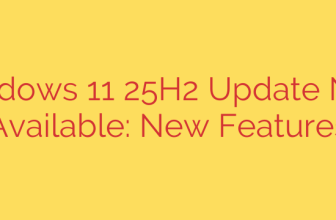
Securing Your LLM: How to Defend Against Unicode Smuggling Attacks
As developers and businesses race to integrate Large Language Models (LLMs) into their applications, a new and insidious security threat has emerged: Unicode smuggling. This sophisticated attack vector can bypass the safety filters and security prompts you’ve carefully put in place, potentially exposing your application to prompt injection, data leaks, and other malicious exploits.
Unlike traditional attacks that are often visible in the input string, Unicode smuggling uses invisible or non-printing characters to deceive security systems. This creates a dangerous discrepancy between what your security tools see and what the LLM ultimately processes, opening a door for attackers.
This guide breaks down what Unicode smuggling is, how it works, and most importantly, provides actionable steps to protect your LLM-powered applications.
Understanding Unicode Smuggling: A New Frontier in LLM Security
The core of a Unicode smuggling attack lies in a concept known as desynchronization. In a typical LLM application, user input first passes through a security layer—such as a Web Application Firewall (WAF) or an input filter—before being sent to the LLM. This layer is designed to catch and block harmful content.
However, many security tools and the LLMs themselves interpret Unicode characters differently. Attackers exploit this gap by embedding malicious instructions using special Unicode characters that are either ignored or misinterpreted by the security filter. When the “cleaned” input reaches the LLM, the model processes these hidden characters, executing the attacker’s hidden command.
Think of it like a secret message written in invisible ink. Your security guard (the filter) inspects the paper and sees nothing wrong. But the recipient (the LLM) has the special light needed to read the hidden, malicious message. This is why Unicode smuggling is a stealthy and effective way to bypass LLM safety protocols.
The Mechanics of the Attack: How Invisible Characters Deceive AI
Attackers have several techniques at their disposal to craft a Unicode smuggling payload. Understanding these methods is the first step toward building a robust defense.
Homoglyphs: These are characters that look identical or very similar to the human eye but have different underlying Unicode codes. For example, an attacker might use the Cyrillic letter ‘а’ instead of the Latin letter ‘a’. A simple string-matching filter looking for the word “admin” might miss “аdmin,” but an LLM may process it correctly.
Non-Printing and Zero-Width Characters: Unicode includes characters that have no visual representation, such as the zero-width space. Attackers can inject these characters to break up malicious keywords, fooling basic security filters. For example,
e-v-i-lcould be written with invisible characters between each letter, making it invisible to a filter looking for the contiguous word “evil.”Bidirectional Characters: Used to support right-to-left languages like Arabic and Hebrew, these characters can control the display order of text. Attackers can misuse them to reorder a command, making it appear benign to a filter but malicious to the LLM. A seemingly harmless phrase could be reassembled by the LLM into a jailbreaking prompt.
These techniques effectively create two versions of the same input: the sanitized version that the security layer sees, and the true, malicious version that the LLM executes.
Why This Matters: The Real-World Risks of Unicode Exploits
The consequences of a successful Unicode smuggling attack can be severe, leading to many of the same outcomes as traditional prompt injection. Key risks include:
- Bypassing Safety Filters: An attacker can trick the LLM into generating harmful, biased, or otherwise inappropriate content that your system was designed to prevent.
- Executing Indirect Prompt Injection: By hiding commands, an attacker could manipulate the LLM to execute unauthorized actions, such as retrieving data from a connected database or making API calls.
- Revealing Sensitive Information: Malicious prompts can be smuggled in to trick the LLM into exposing parts of its system prompt, internal logic, or other proprietary data.
- Compromising Application Integrity: If the LLM is integrated with other systems, a successful attack could lead to a wider security breach across your infrastructure.
Protecting Your LLM: Actionable Steps to Mitigate Unicode Smuggling
Defending against this threat requires a proactive and layered security approach focused on ensuring consistency in how input is processed. Here are the essential steps every developer should take:
1. Normalize All Inputs with NFKC
This is the single most effective defense. Unicode normalization is the process of converting a text string into a canonical, or standard, form. The NFKC (Normalization Form Compatibility Composed) standard is particularly effective here. It converts characters to their most common and compatible equivalents, which strips out many of the homoglyphs and special characters used in these attacks. Before any input is checked by your security filters or sent to the LLM, it should be normalized.
2. Ensure Processing Consistency
The foundational vulnerability of Unicode smuggling is the desynchronization between your security layer and the LLM. You must ensure that both systems see the exact same, normalized input. After normalizing the user input, pass that same normalized string to both your security checks and the LLM. Never allow your security layer and the LLM to process different versions of the input text.
3. Implement Strict Character Filtering
After normalization, apply strict filtering rules. If your application only requires basic alphanumeric characters, create an allow-list that only permits those characters and rejects everything else. For applications requiring broader character support, create a deny-list that explicitly blocks known dangerous Unicode characters, including non-printing characters and bidirectional formatters.
4. Employ a Defense-in-Depth Strategy
No single solution is foolproof. Combine multiple security measures for a robust defense:
- Start with Unicode normalization (NFKC) on all inputs.
- Apply strict character filtering based on your application’s needs.
- Use a well-designed system prompt that instructs the LLM to reject suspicious or malformed inputs.
- Continuously monitor and log LLM inputs and outputs to detect anomalous behavior.
Staying Ahead of Emerging AI Threats
The security landscape for AI is constantly evolving. Unicode smuggling serves as a critical reminder that attackers will always seek to exploit the seams between different system components. By focusing on fundamental security principles like input sanitization, normalization, and processing consistency, you can build more resilient and secure LLM applications capable of withstanding these sophisticated, invisible threats.
Source: https://aws.amazon.com/blogs/security/defending-llm-applications-against-unicode-character-smuggling/








